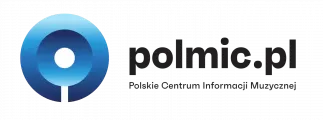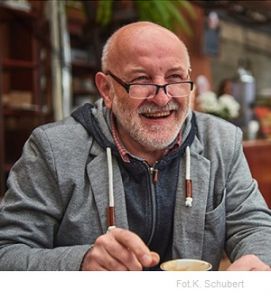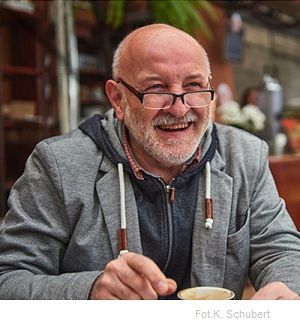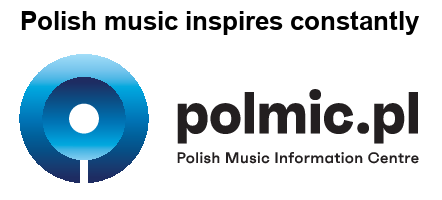Chołoniewski Marek
-
promoter, composer, performer
composer and performing musician, b. 23rd October 1953 in Cracow. He studied music theory and composition with Bogusław Schaeffer as well as organ with Leszek Werner in the State Higher School of Music in Cracow. At present, he is a reader at the Department of Composition at the Music Academy in Cracow. Since 1976, he has also worked in the Electroacoustic Music Studio in the same academy; he has held the function of director of this studio since 2000.
In 1977, Chołoniewski established the “Music Centre” Artistic Association which organised about 400 concerts. Since 1979, he has been a member of the “Cracow Group”. He also founded the MCH Studio, co-founded the ”Freight Train” Music Group (with Krzysztof Knittel and Piotr Bikont in 1986) and the Ch&K Studio (also with Krzysztof Knittel). Since 1987, he has organised the “Audio Art” concert series. He was the initiator, and is now artistic director, of the international “Audio Art” festival and (with Matthias Hermann) - of the International Cracow/Stuttgart Contemporary Music Workshops. Since 1990 he has been giving concerts (mostly as a performer of live computer music), teaching courses and delivering lectures on computer music in many European countries, as well as the United States and Canada. In 1993-99 he was artistic director of the Internationale Akademie für Neue Komposition und Audio Art in Schwaz in Austria. He has also created and co-ordinated spatial-outdoor projects (The Ship of Artists, 2000) and interactive on the web (GlobalMix, 1998 and GPS-Art, 2000).
Marek Chołoniewski writes instrumental and electroacoustic music, audiovisual computer compositions, music for the theatre, film, radio and television.
Creation
Chołoniewski is one of those artists who explore and search for the new. After all, his composition tutor was Bogusław Schaeffer, the guru of Polish new music, while one of his closest artistic friends is the avant-garde pioneer Krzysztof Knittel, with whom Chołoniewski has prepared numerous musical projects, the most spectacular of which was most likely the “Freight Train” - a type of perpetual, ever-changing performance. This is one of the three forms of contemporary music that Chołoniewski seems to feel particularly at home in, the other two being - audiovisual composition and electroacoustic music. He has composed the latter since 1976 in the Electroacoustic Music Studio of the Music Academy in Cracow, of which he has been the director since 2000. He also holds courses and lectures on computer music in many European countries, in the United States and Canada, as well as giving concerts as a performer of live computer music.
The 2001 “Warsaw Autumn” witnessed the first performance of Passage, “an audiovisual composition for eight performers”, a work which extremely well exemplifies Chołoniewski’s artistic ideal. The composer defined this piece also as an “interactive octet for instruments and computer”. In the Festival’s programme book, he disclosed his creative and “technological” creed:
“THE IDEA:
In Passage, the choice of sound material is made by means of pre-defined methods of selection (i.e. algorithms), which in fact deprive the author (in the positive sense of the word ‘deprive’) of the possibility of taking his own individual decisions concerning the specific elements of the musical work. The choice thus depends on the method of selection which, if applied strictly and consistently, will form well-defined musical structures. In this way, the author frees himself partly from his own individual preferences and enters the realm of experimentation, which, as in the case of Passage, was subjected to rigorous control. The composition itself is a sum of my various experiences collected during many years of work on algorithmic computer compositions in which the division between instrumental and computer music was abolished, and so were also the boundaries of style and sound material with reference to the principal elements of the musical work.
THE FORM:
The composition consists of four parts: I. Introduction, II. A Theatre of Gestures, III. The Score, IV. A Film. The first two parts are a performance in which the musicians operate a computer music system through quasi-theatrical actions, thus creating a live, multidimensional sound structure. Each musician performs his or her own independent part. The computer system simultaneously creates a score which will provide the basic tone material for parts III and IV. The musicians perform instrumental parts which they see appearing on monitors. Additionally, the movement of the instruments and the change in the positions of musicians in part III influence the way in which the sounds of acoustic instruments are transformed. The last, 4th part of the work is an audio-visual spectacle in which film projection (computer animations) generated by the movements and gestures of musicians is coupled with interactive transformations of instrumental sound.
THE SCORING:
Passage is performed by an octet made up of two quartets: a woodwind quartet (flute, oboe, clarinet and bassoon) and a string quartet (violin, viola, cello and double-bass). Since all the musicians are simultaneously “performance artists” who perform a specific “theatre of gestures”, their physical relation to the instrument, the possibility of movement with the instrument is one of the basic technical assumptions of the presented piece.
A VISTA
The passage (cf. the title) from part II to III of the work constitutes a major technical problem. The material, in the form of a traditionally composed score, appears in front of the musicians’ eyes for the very first time at the moment of the performance. The composition has many versions: the material “composes itself” each time in a slightly different way. Therefore, the musicians perform Parts III and IV a vista. The approximate graphic score composition generated by gestures is tempered and rhythmically averaged by an interactive computer system. The overall concept of the piece excludes the possibility of prior preparation of individual parts by each musician.
The performance makes use of a conductor,or else a headphone system through which the metronomic impulse sent by the computer is transmitted individually to each musician (a principle frequently applied in Like Breathing).
GESTURES
Gestures are the principal source material in Passage. They take two distinct forms:
- of geometric figures,
- of musical expressions.
A gesture performed higher, i.e. closer to the source of light defines a higher value - higher pitch, whereas a gesture closer to the floor, farther from the source of light defines a lower value - lower pitch. An interactive optical computer system reacts to the changes in the position of the hand.”
Compositions
Citroblage-assemblage from a prepared cither for solo headphones (1975)
...a due tempi... for two pianos (1975)
Electronic Composition No. 1, a graphic score (1975)
Section of a Larger Whole for two flutes (1975)
String Quartet (1975)
The Last Dreams Come Through the Hair for string sextet (1975)
Red a composition for tape (1975)
Assemblages, graphic music for specific performers and stereo tape (1975)
Concierto de Aranjuez – music for a non-existent cartoon for solo vibraphone (1976)
...blank..., a composition for tape (1976)
Pizza for instrumental ensemble (1976)
A Slipper Between the Sheets for orchestra and 4-channel tape (1976)
ID open letter to Olga Szwajgier, music for reading aloud (1976)
Soprano Quartet for soprano saxophone and 3 sopranos (1977)
a Beethoven-synthiblage for 4-channel tape (1977)
gmb 78 for viola da gamba (1978)
Amput for baritone with an alto range, small flute, sopranino saxophone in E-flat, oboe in E-flat, cornet in E-flat, electronic transformations and multi-channel tape (1979)
Collectiv 4 for organ, bassoon, bells, violin and piano (1979)
Reflections for 4-channel tape (1979)
Process (for K.) for tape (1980)
La Cumparsita I for 4 string instruments and oboe (1980)
La Cumparsita (hki 290880) for tape (1980)
La Cumparsita II for oboe, string quartet and tape (1981)
Cadenza for viola da gamba and chamber orchestra (1981)
Rag, Rag, Rag for tape (1983)
Cadenza II for viola da gamba, synthetisers and tapes (1983)
Swinging Parameters for oboe, violin, synthetiser and tape (1984)
The Same Fire for Everyone for tape (1985)
Here and There for piano, synthetiser and computer (1986)
Pilot automatyczny na taśmę [wspólnie z Krzysztofem Knittlem, Marcinem Krzyżanowskim i Markiem Nędzińskim] (1986)
Follow Me II for synthetisers and computer (1987)
Go-Go Beuys Band [wspólnie z Krzysztofem Knittlem, Marcinem Krzyżanowskim i Markiem Nędzińskim] (1987)
Ears, Nose, Eyes, sound installation (1988)
Follow Salzach for instruments, natural environment and computer (1988)
Follow, Follow, koncert potrójny na kwartet obojowy, orkiestrę, transformacje i komputer (1988)
Wysyg for light and computer (1989)
Switched On..., theatre for objects and computer (1990)
Switched Off... for instruments and computer (1990)
Two Suns for instruments and computer (1990)
Like Breathing [1st version] for computer (1991)
Like Breathing [2nd version] for flute, oboe, soprano saxophone, bassoon, viola, double-bass and piano (1991)
Like Breathing [3rd version] for flute, violin, viola, guitar and computer (1991)
The Beauty and the Beast for voice and computer (1992)
Picture Reading, an interactive system (1993)
Doubles for voice, light and computer (1993)
Silber for wind orchestra, chamber ensemble, dancers, light and computer (1994)
Sha’ba del’mana, a ballet (1994)
Lighting, interactive installation (or performance) (1995)
River Dart for voice, light and computer (1995)
Hypermeable Objects, sound installation (1996)
Lighting II, audio-visual project (1997)
Upside Down, performance (1997)
GlobalMix, collective internet composition (1998)
Brightening, interactive project (1998)
One Piece of Table, performance (1999)
Dark & Light Zone for string quartet (1999)
plus Brightening 2 [wspólnie z Mark Polishook] (1999)
Face, interactive audio-visual project (2000)
Garage, installation for chamber orchestra and cars (2000)
Passage, interactive octet for instruments and computer (2000)
Opera Installation für Tiere und Miniaturstadt [wspólnie z Markiem Chlandą] (2000)
Art Boat, Open-Air Projekt am Vistula-Fluß, Bootsinstallation (2000)
GPS-Trans 1, audio city map, interactive composition for 16 mobiles phones (2000)
Aelita, music to the silent film (with the Freight Train group) (2000)
GPS-Trans 2, Cracow audio city map, internet broadcast (2001)
etwas anderes for percussion and computer (2001)
Stuttgart Tunnel for bass guitar and computer (2001)
Passage, interactive score for ensemble (2001-2013)
GPS-Trans 3, Cracow audiovisual city map, internet broadcast (2002)
Last Minute Grooves for saxophone and computer (2002)
face 2, performance (2002)
GPS-Trans 4, Cracow audiovisual city map for composer, ensemble, dancer and audience (2003)
dizzy, dizzy for ensemble (2003)
Physical Modelling for instrument and tape (2004)
Assemblages 2 for ensemble (2004)
GPS-Trans 5 Net Brigde, web project (Luxembourg, Cracow) for nonet and interactive system (2005)
Nostalgiya for Natural Plastic duo [with Stoyan Stoykov] (2005)
Wieliczka Salt Mine, sound installation for Expo 2005 (2005)
GPS-Trans 6, audiovisual project for ensemble and Warsaw city (2005)
Dizzy Kinetics, interactive project (2005)
Nortus Farae for cello, video score and soundtrack (2006)
GPS-Trans 7 for Chicago city and You Must and You Can ensemble (2007)
GPS-Trans 8 for 4 cities: Cracow, Warsaw, Luxembourg, Chicago and ensemble (2007)
iPhone Brass for iphone and wind orchestra (2008)
GPS-Trans 9 COOP project (2009)
IterEter, interactive installation [with Peter Sych, Marcin Pączkowski and Jan Chołoniewski] (2009)
GPS-Trans 10, Multiplace project (2009)
iPhonic na telefon komórkowy (2010)
QUB, audiovisual installation [with Krzysztof Knittel, Maciej Walczak and Peter Sych] (2010)
Mimoid, music for the video installation of Miłosz Łuczyński (2010)
Pecs Derive/GPS-Trans 11 [with European Bridges Ensemble] (2010)
Miłosz's Places, immersive video installation [with Miłosz Łuczyński] (2011)
Behind the Wall, installation (2013)
Waves for computer, electronics and multimedia (2014)
blink for electronics (2014)
Rhizomes, installation (2014)
Fotrus Narrae for instrumental ensemble and electronics (2014)
Interactive Work for school orchestra (2016)
La Cumparsita for oboe/English horn, saxophones, electronics and video (2016)
Double Brain [with Franciszek Araszkiewicz] for networked brainwaves (2016)
Windwaves, installation for chamber orchestra and audiovisual instruments (2016)
Publications
articles & papers
Cisza,, w: John Cage: człowiek, dzieło, paradoks, red. M. Chołoniewski, B. Bogunia, Akademia Muzyczna, Kraków 2014
Literature
Jabłoński Maciej, Chołoniewski Marek, In: PWM Music Encyclopaedia (biographical part ed. by Elżbieta Dziębowska), vol. “cd – Supplement”, PWM, Kraków 2001
Mówi Marek Chołoniewski: co słychać?
O laptopach, "ogrodach dźwiękowych", teledyskach i "orkiestrze wertykalnej",
Dźwięk, technologia, środowisko..., muzyka?
Niektórzy mają warsztat,


